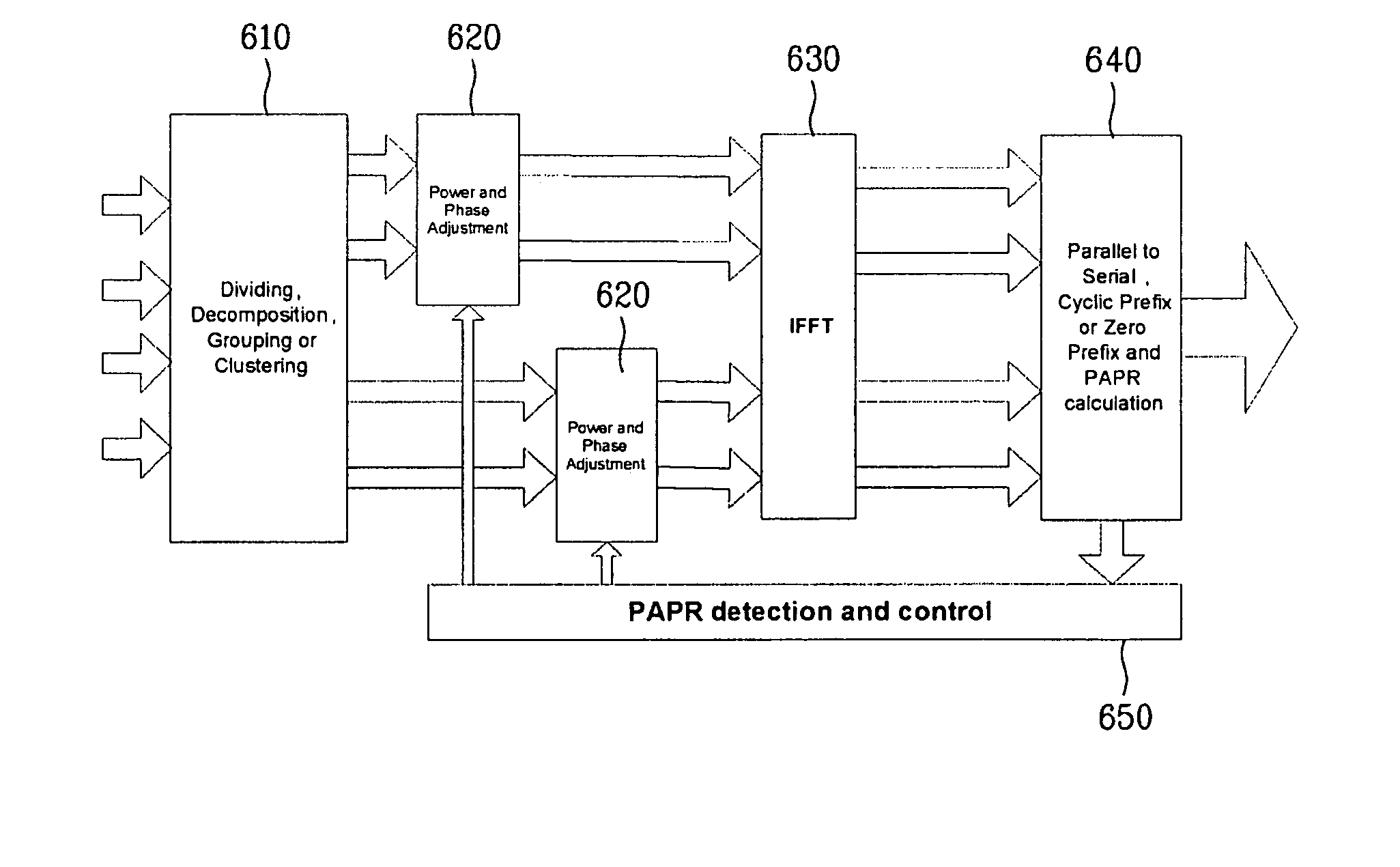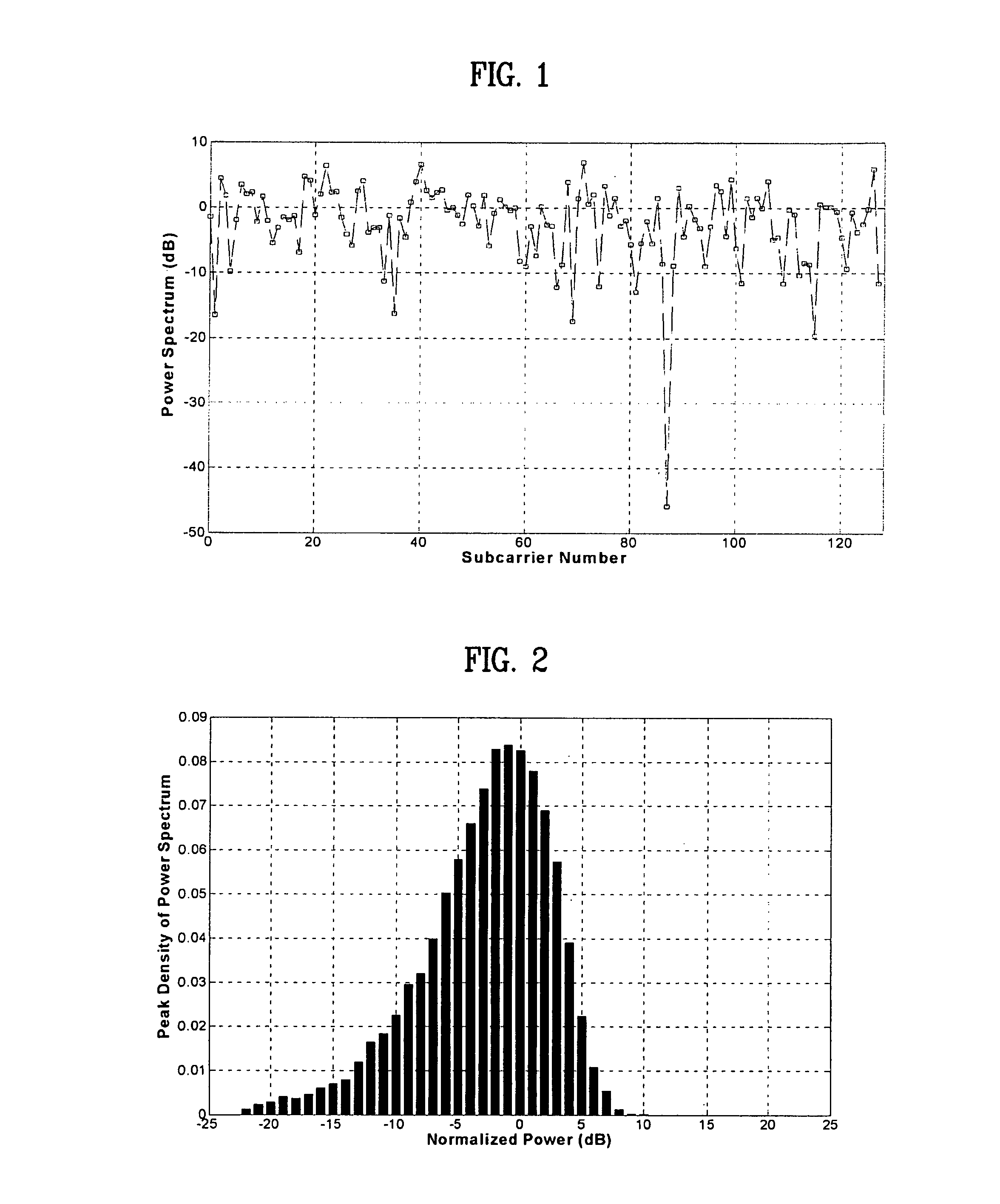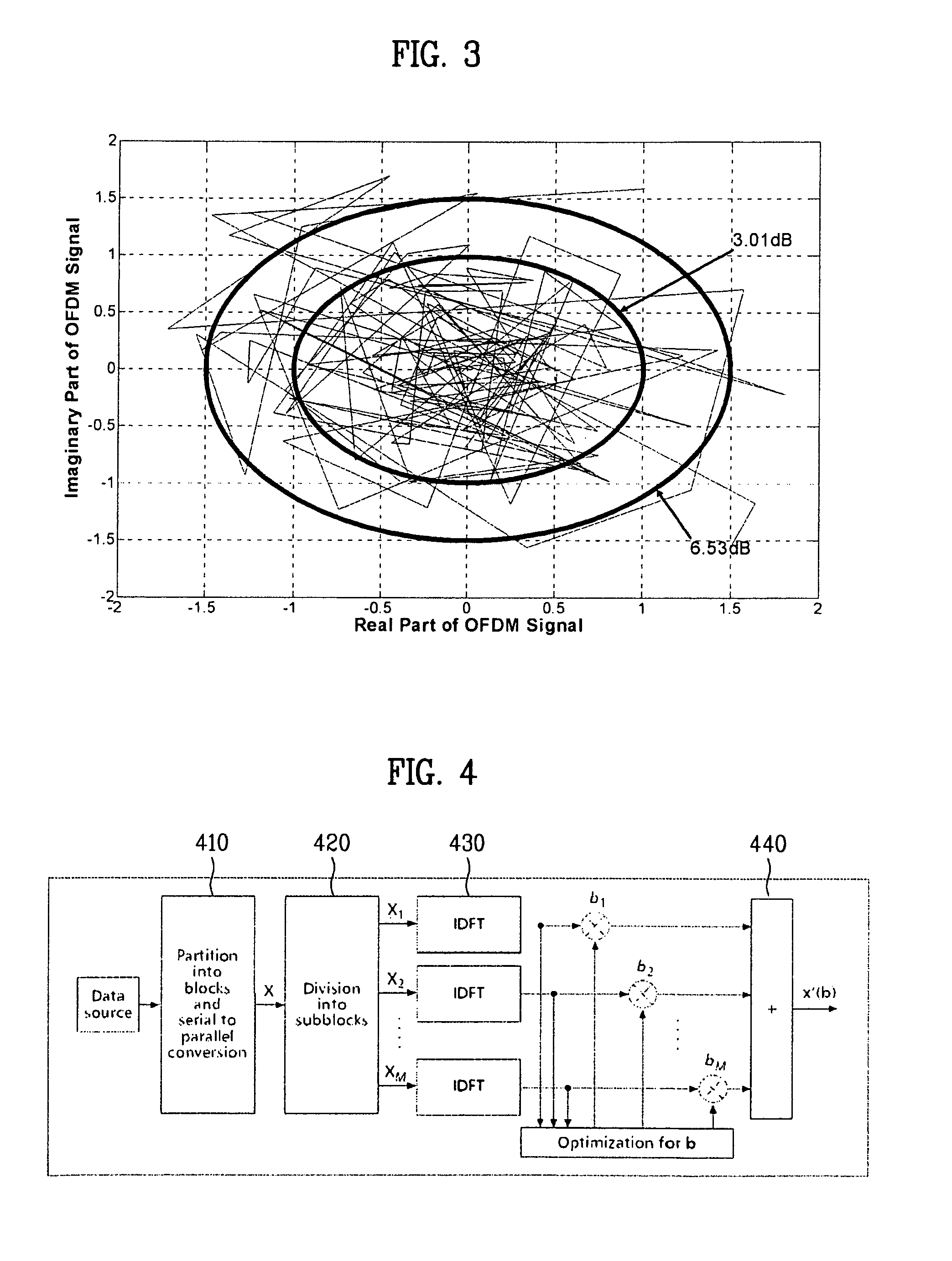Peak to average power ratio reduction
a technology reduction of peak to average power ratio, which is applied in the direction of transmission path sub-channel allocation, multi-frequency code system, baseband system details, etc., can solve the problem of critical affecting broadband communication, large peak-to-average power ratio (papr), and large peak-to-average power ratio (papr) characteristic of multi-carrier signal with a large number of subchannels
- Summary
- Abstract
- Description
- Claims
- Application Information
AI Technical Summary
Benefits of technology
Problems solved by technology
Method used
Image
Examples
Embodiment Construction
[0040]The present invention relates to reducing a peak to average power ratio (PAPR) of a signal in a wireless communication system.
[0041]FIG. 1 illustrates an example of an OFDM signal with a signal length L=128. FIG. 2 illustrates a distribution between a peak power and an average power of an OFDM signal having a signal length L=128. FIG. 3 illustrates a plot of a real part of an OFDM signal having a length L=128 versus an imaginary part of the OFDM signal. Static properties of PAPR can be described by a complementary cumulative distribution function (CCDF). In accordance with the present invention, a frequency-domain symbol may be complex Gaussian distributed. Thus, when the number of subcarriers L become large, the instantaneous power of each OFDM signal chip can be modeled by a chi-distributed signal with two degrees of freedom.
[0042]In accordance with the present invention, several solutions exist to reduce the PAPR. Examples include clipping, filtering, partial transmit signa...
PUM
 Login to View More
Login to View More Abstract
Description
Claims
Application Information
 Login to View More
Login to View More - R&D
- Intellectual Property
- Life Sciences
- Materials
- Tech Scout
- Unparalleled Data Quality
- Higher Quality Content
- 60% Fewer Hallucinations
Browse by: Latest US Patents, China's latest patents, Technical Efficacy Thesaurus, Application Domain, Technology Topic, Popular Technical Reports.
© 2025 PatSnap. All rights reserved.Legal|Privacy policy|Modern Slavery Act Transparency Statement|Sitemap|About US| Contact US: help@patsnap.com



